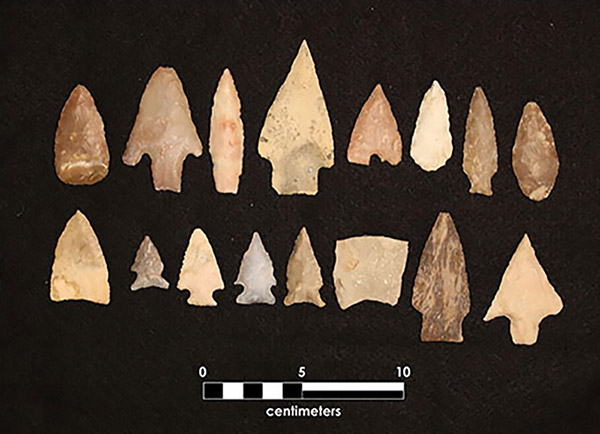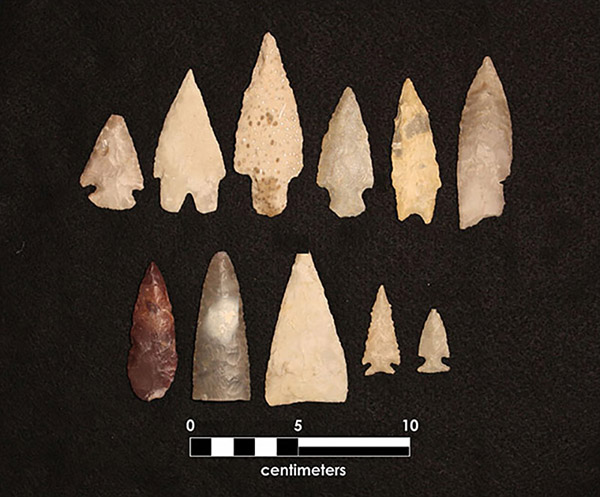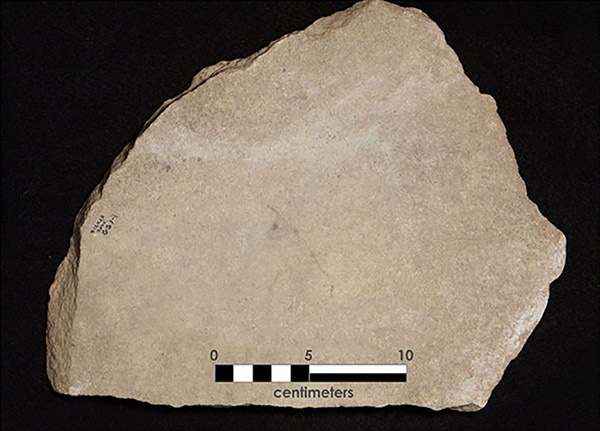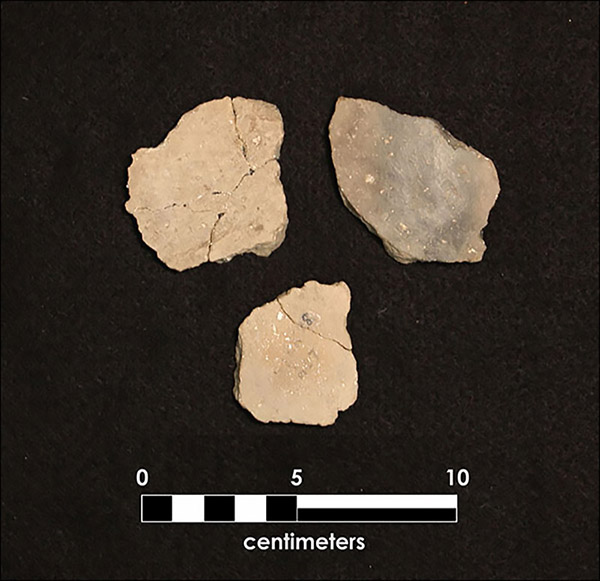The Loma Sandia Site (41LK28)
The Center for Archaeological Research (CAR) at the University of Texas at San Antonio (UTSA) was awarded a Texas Preservation Trust Fund (TPTF) grant in 2020 to rehabilitate the collections associated with the 1977-1978 excavations of the Loma Sandia Site (41LK28). The rehabilitation included the repacking of the collection into stable archival bags and boxes and the creation of a digital catalog. The Texas Historic Commission (THC) awards competitive grants from the TPTF for planning, survey, restoration, preservation, and heritage education activities that support the preservation of archeological properties and associated collections from the State of Texas. The grant provided CAR with funds to protect the integrity of an important collection.
41LK28 was initially documented in 1973 during a Texas Highway Department archaeological reconnaissance of the proposed right-of-way for IH37. Charles A. Johnson II led the initial test excavations at the site during September and October 1977 (Johnson 1977). Based on the presence of subsurface deposits, Johnson recommended additional investigations. From September 1977 through October 1978, Johnson oversaw extensive excavations at the site under TAC Permit #228 to mitigate the destruction of much of the site, as a consequence of the construction of IH 37 (Taylor and Highley 1995).
The site, which spans approximately 15 acres, is located in Live Oak County along a small tributary of the Frio River north of Three Rivers, Texas. The archaeological investigations yielded evidence of prehistoric use and occupation from the Late Paleoindian period through the Late Prehistoric period. The mitigation uncovered high densities of artifacts and over 400 cultural features including an isolated cache dating to the Late Paleoindian or Early Archaic period. Recovered artifacts include bone tools, modified shell artifacts, prehistoric pottery sherds, and over 70,000 lithic specimens including cores, thick bifaces, thin bifaces, dart points, arrow points, Clear Fork gouges, Guadalupe tools, unifaces, edge modified flakes, hammerstones, and groundstone metates and manos (Taylor and Highley 1995).
Loma Sandia is a State Archeological Landmark based on the importance of the collected artifacts and data for studies of Texas prehistory. A Texas Historical Marker was erected near the site in 2012 to interpret and explain the importance of the site to the public.
Lithic Artifacts
Lithic materials, including projectile points, lithic tools, debitage, and burned rock, are often the most numerous or only artifacts found at prehistoric sites. This is due to their important role in prehistoric material culture, as well as the durability of stone over time.
Projectile Points
Over 550 projectile points were recovered during the 1978-1979 excavations at 41LK28. The assemblage is consistent with long-term occupation of the site. It includes points that date to the Paleoindian Period (Plainview and Scottsbluff), Late Paleoindian Period (Angostura), Early Archaic Period (Andice and Early Triangular), Early to Middle Archaic Periods (Abasolo and Bulverde), Middle Archaic Period (Kinney, Langtry, and Pedernales), Middle to Late Archaic Periods (Carrizo, Lange, Morhiss, Palmillas, and Tortugas), Middle Archaic to Transitional Archaic Periods (Ellis), Late Archaic (Desmuke), Late Archaic to Transitional Archaic Periods (Ensor, Fairland, Marcos, and Montell), Late Archaic to Late Prehistoric Periods (Catan), Transitional Archaic Period (Darl and Edgewood), and the Late Prehistoric Period (Edwards, Perdiz, and Scallorn). All the projectile point time periods, derived from Turner and Hester (1985), Hall et al. (1986) and others, are from Taylor and Highley’s 1995 site report.


Specialized Tools, Bifaces/Unifaces, and Edge-Modified Flakes, and Hammerstones
Other types of lithic tools were also recorded at the Loma Sandia site. Over 160 edge-modified flakes were recovered. Edge modified flakes are informal tools, consisting of flakes that were worked along one or more edges or flakes with edges that show use-wear. Over 550 bifaces and unifaces were recovered from the site. These tools can be worked on one side or on both sides. They may or may not show evidence that they were hafted. Their function is often unclear without examination of use-wear. Over 100 specialized tools were recovered. These include gouges/adzes, grooved abraders, and perforators. Over 60 hammerstones were recovered. Hammerstones were used as percussors for flintknapping.
Groundstone
Over 450 specimens of groundstone were recovered from 41LK28. These include 33 metates and 56 manos. In south and central Texas, groundstones were used to process a variety of plant foods and other materials such as pigment.


Ceramics
Over 30 Native American ceramic fragments were recovered from the site. In central and south Texas, these were associated with the Late Prehistoric period (1200-350 BP). The sherds appear to belong to a single vessel.

Rehabilitation
The artifacts from the Loma Sandia mitigation are permanently curated at the CAR facility. The THC TPTF grant awarded to CAR facilitated the rehabilitation of this important collection. The work included a reconciliation of the collection to fieldwork and report documentation and the creation of a digital catalogue of all the recovered artifacts. The collection was repackaged and tagged in accordance with current curation standards to prevent deterioration and maintain its integrity. All records associated with the project are preserved to prevent loss of data. The CAR rehabilitated 195 boxes of artifacts and 18 linear feet of records over the course of the rehabilitation. Work was completed by CAR staff, student interns, and community volunteers. This rehabilitation will help maintain the integrity of the collection, improve accessibility, and ensure that data from this site is available to researchers for decades to come.
References Cited
Hall, G.D., T.R. Hester and S.L. Black
1986 - The Prehistoric Sites at Choke Canyon Reservoir, Southern Texas: Results of Phase II Archaeological Investigations. Choke Canyon Series 10. Center for Archaological Research, The University of Texas at San Antonio.
Johnson, C.A.
1977 - Initial Testing Report for 41LK28, Unpublished report on file at the Archaeology Section, Highway Design Division, State Department of Highways and Public Transportation, Austin, and the Center for Archaeological Research, The University of Texas at San Antonio.
Taylor, A.J. and C.L. Highley
1995 - Archaeological Investigations at the Loma Sandia Site (41LK28): A Prehistoric Campsite in Live Oak County, Texas. Studies in Archeology No. 20. Texas Archeological Research Laboratory. The University of Texas at Austin.
Turner, E.S. and T.R. Hester
1985 - A Field Guide to Stone Artifacts of Texas Indians. Texas Monthly Press.

